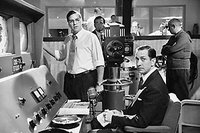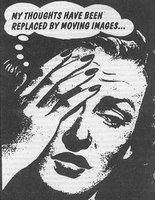Bluebird Theory
 I I had a friend (i screwed up that friendship - but he's a nice guy and will eventually let me off the hook - maybe I'll call him today - but i probably won't) and he owned a fancy men's store. It was very nice and he was and is a very good merchant. One Saturday he called me and he told me that a bluebird landed. A guy bought about $3k of clothes - this is 1999-2000 - and that was 5% of monthly store sales in 1 day! Wow.
I I had a friend (i screwed up that friendship - but he's a nice guy and will eventually let me off the hook - maybe I'll call him today - but i probably won't) and he owned a fancy men's store. It was very nice and he was and is a very good merchant. One Saturday he called me and he told me that a bluebird landed. A guy bought about $3k of clothes - this is 1999-2000 - and that was 5% of monthly store sales in 1 day! Wow.Anyway i asked him how often this happened. He thought about it a bit and told me that it was about 1-2 times every 2-3 months. Therein was the birth of the Blue Bird Theory.
Something that happens repetitively - though sparsely - is not a Bluebird. Indeed, if understood, repeatable bad things could be eliminated or delayed or repeatable good things increased or sped up or both. People often will attribute to chance that which has a real pattern. And that attribution is a counter intuitive car accident. This new research that had been floated regarding decision making process and such is the antiChrist to the Bluebird Theory. The Bluebird theory requires questioning, examination, review, thought, and so on. BUT when applied and understood it is liberating.
 Now i just read in the WSJ - "U.S. consumer prices rose 0.7% during January as food and energy costs jumped, but excluding those volatile categories, inflation pressures remained largely contained." Now what sense does that make? - these things indeed are volatile - but they are repetitive and they look like they will continue - if anyone asked which direction the larger group of us might say up - so why in hell would anyone report what the WSJ just said? THIS IS REVERSE BLUEBIRD THEORY! The use of the Bush Administration to exclude what is common, repeatable, identifiable, quantifiable, expected, is exactly what the Bluebird Theory states. And YOUR government is trying to tell us these factors are a Buebird - WHEN THEY ARE NOT!
Now i just read in the WSJ - "U.S. consumer prices rose 0.7% during January as food and energy costs jumped, but excluding those volatile categories, inflation pressures remained largely contained." Now what sense does that make? - these things indeed are volatile - but they are repetitive and they look like they will continue - if anyone asked which direction the larger group of us might say up - so why in hell would anyone report what the WSJ just said? THIS IS REVERSE BLUEBIRD THEORY! The use of the Bush Administration to exclude what is common, repeatable, identifiable, quantifiable, expected, is exactly what the Bluebird Theory states. And YOUR government is trying to tell us these factors are a Buebird - WHEN THEY ARE NOT!A recent report widely distributed concluded with 'Follow your gut,' study advises on big decisions. Now I'm very much in agreement with this basic advise - however it must be applied carefully - since examination does lead to determination. The key is to not waste the time making the determination when no more is known and the final conclusion is the same as the gut instinctual one. combined with observation, consideration, calculation and conclusion.
An extreme yet important and overlooked example of the Bluebird Theory would be the "January Thaw". If more thought and attention were given to the January Thaw many societal problems would be solved permanently. More about that later. But I gotta say - every year people are surprised by the the warm temperatures (this has nothing to do with global warming) in late December, early January - and they all say - January Thaw as though they knew it before despite their surprise during and then prediction after the fact.
Finally - i wanna say "fu" but someone told me it wasn't necessary - which it really is - but i decided to stop saying "fu" so . . . . . . . . the end.




















